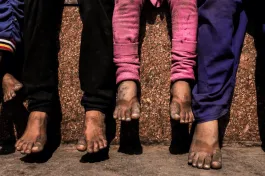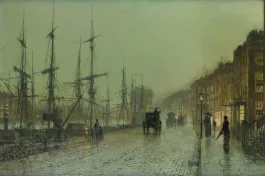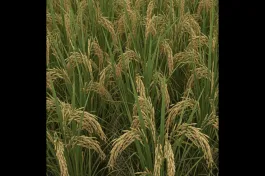“History,” declares James Joyce’s young protagonist Stephen Dedalus in one of the most famous lines in Ulysses, “is a nightmare from which I am trying to awake.” In an Ireland grappling with long colonisation and emotional appeals by its nationalist movement to re-energise its suppressed Irish identity, Stephen balks at the pressure to valorise an “authentic” Gaelic-Irish past untarnished by the colonial encounter, doubtful if it can, or even should, be sought to be reclaimed in the early 20th century Dublin he lives in.
Two important English-language novels that came out this year seek to understand the present—what it means to be living in India, particularly urban India, at this moment—in relation to the past. Set in Delhi and Mumbai respectively, Anjum Hasan’s History’s Angel (Bloomsbury, 2023) and Devika Rege’s Quarterlife (Fourth Estate, 2023) examine the curious hardening of religious and regional identities in the “globalised” India we inhabit today. They also look at the multiple ways in which the past—or versions of it—can be invoked to make sense of the present. Written in very different styles, both novels are crucially concerned with the instrumental use of history to shape a certain kind of future, both personal and national, and the huge, tragic implications this has for the here and now.
Hasan’s novel has as its central protagonist a history school teacher for whom the historical past is far from being dead and gone—it is a living presence he is constantly in conversation with. Hopelessly out of place in a global urban utopia in which “the future is already here” (p. 33) and “everything is within the reach of everyone – it’s just a question of adjusting the monthly instalments” (p. 200), Alif struggles to come to terms with a new world. His teenage son Salim dreams of making a career in “cloud computing” or “big data”, terms that mean almost nothing to Alif, but fill Salim with a sense of aspiration and purpose.
Written in very different styles, both 'History’s Angel' and 'Quarterlife' are crucially concerned with the instrumental use of history to shape a certain kind of future, both personal and national, and the huge, tragic implications this has for the here and now.
Fittingly, the mobile phone Alif carries, discarded by his wife for a newer model, is “something from the era, very recent and already prehistoric, when phones were just phones” (p. 31), as he tries to identify and put a date to “that point in history when a giant, killer wave of consumables leapt out of the ocean and killed the poetry in us ... we don’t know what to do with ourselves except long for more things” (p. 199). Deeply at odds with “a city made so insistently, so noisily, of now” (p. 7), the forty-something Alif is also at a remove from his own self. He has never quite felt “at the centre of his story” (p. 10), wanting only to be an anonymous walker on the streets of Delhi, at every step tuned into and conversing with a past that is more compelling to him than the clamour of the present.

These walks invariably take him to the grand monuments of the past that appear to be “not merely from another time but a different dimension altogether, out of place in the often smoggy, often small-hearted city” (p. 24). The perfection and grace of the Jama Masjid, in whose shadow Alif has grown up and “within sight of which [he] would like to die” (p. 136), the wonder that is the Qutub Minar, built layer by layer over a period of 300 years yet “looks like one thing” (p. 167), speak of architectural harmony and continuity. This is neither to be found in the dilapidated warrens and crowded lanes of Jamia Nagar or the shabby chic of Mehrauli, nor in the soulless high-rises of Greater Noida his wife aspires to live in, not a name at all but a “cold and bureaucratic thing—an acronym” (p. 206).
Tahira, unlike Alif, sees little beauty or romance in the crumbling old house in Daryaganj she has grown up in, seeking to shape her identity as a modern Muslim woman who refuses to whip up biryani and kababs on demand. She works in a supermarket and studies for an MBA, “wears a hijab and drives a car; reads both moral lessons and marketing texts” (p. 269). Living in a mixed neighbourhood is an important step in her dream of upward mobility, one she realises she will have to set aside in a city increasingly inhospitable to the “other”.
The Citizenship Act has been amended despite vigorous protests, a history professor in Delhi University has been physically assaulted and his office vandalised for his views on the “composite origins” of Hindu civilisation (p. 232). The violence of Partition, seen by Alif as a tragic moral failure, has sprouted so many heads it becomes difficult to tell from the almost daily visuals on television “whether an untouchable has been murdered for being an untouchable, a Muslim lynched for being a Muslim, a Naxalite shot for being a Naxalite, a Kashmiri liquidated for being a Kashmiri, a journalist assassinated for asking questions or a farmer dead from suicidal despair” (p. 74).
On [Alif’s] way to visit a relative, his elderly uncle is attacked on the metro, thrown bleeding onto the platform, taken to the police station instead of a hospital and beaten to death by the police.
At home, Alif’s parents’ adopted son/retainer has transformed, seemingly overnight, into a fervidly pious Muslim, complete with “pointless beard”, exhortations to not forget “Babri (p. 99), and demands for a loan to go on pilgrimage to Mecca. The horrific insanity of the times is mirrored in the absurdity of the novel’s plot. Alif’s exasperated ear-twisting of a nine-year old student who protests at being taken to Humayun’s tomb instead of the Hanuman temple and accuses him of being a “dirty Musalla” (p. 31), sets in motion a series of disciplinary measures by the school establishment that lead, incomprehensibly but also inevitably, to Alif being sacked.
On his way to visit a relative, his elderly uncle is attacked on the metro, thrown bleeding onto the platform, taken to the police station instead of a hospital and beaten to death by the police. “Why? Nothing personal, just the wrong man in the wrong place, just something anti-national about that look” (p. 274).
If an alternative to the politics of resentment and narrow identities ever existed—and the novel suggests that, not so long ago, it did, in the relaxed humanism of Alif’s parents and their peers, their adherence to the practical above all else, their gentle and un-showy good sense—it would find its natural home in the poet Iqbal’s figure of the “Hindi”—“Hindi hain ham/vatanhai Hindustan hamara”. This figure, centrally represented in the novel by Alif, is an anachronism in the Delhi of today, devoid of the power to speak or influence.
“There was only a handful of them left, these Hindis, some men and women from his parents’ generation, shuffling about in their retirement, baffled by the times—not innocent of the divisions between the Hindis, because those have always been there, but unable to understand how these divisions came to count for so much. What stirred the blood at one time was the idea that they might join hands—the Hindis. That was once the dream of Hindustan but Hindustan was being dismantled now, Bharat was taking its place, ...” (p. 63)
In its association of the city with a bygone poetry and grace, History’s Angel evokes two other marvellous Delhi novels, Ahmed Ali’s Twilight in Delhi (1940), and Anita Desai’s In Custody (1984), although Hasan’s Delhi is a resoundingly contemporary one, very much a creature of the 21st century. Focalised through Alif’s consciousness, whose perspective guides us through the narrative, an overwhelming sense of loss, decline, and missed opportunities underpins the novel though it is interspersed with some delicious moments of humour and even comedy.
***
The formally more sophisticated Quarterlife, on the other hand, uses the form of the novel to stage a richly complex, open-ended discussion between a range of characters, young men and women examining the fault lines between their personal narratives and those of the caste, region, race, and nation they identify with. In its refusal to privilege any one (set of) character(s) or standpoint(s), its attempt to elaborate a spectrum of political positions, and its use of language to bolster and simultaneously unravel its characters, Quarterlife is an ambitious, demanding, and deeply rewarding novel.
Set in 2014, the great watershed for India when the Bharatiya Janata Party (BJP) gained power at the centre, the novel configures this moment charged with promise and potential for a national “revival” through the personal journeys of three characters poised for new beginnings and self-discovery. Each of these characters opens up not only their own conflicted inner worlds to the reader but also those of the people they are close to. They also reveal the many-layered, internally contradictory domains of Mumbai’s business and corporate sector, the non-governmental organisation (NGO) sector, and Maharashtra’s regional youth politics.

Character names become chapter headings, each chapter is not just about a character’s thoughts or actions but also narrated in her or his voice (free indirect speech put to fine use). So what we get is an almost unmediated access to the consciousness of a very disparate array of characters with very different ideological positions on the political spectrum.
[Each of the three characters in Quarterlife] reveal the many-layered, internally contradictory domains of Mumbai’s business and corporate sector, the non-governmental organisation sector, and Maharashtra’s regional youth politics.
After studying and working in the United States as a financial consultant for several years, the disillusioned Naren has sensed that “the future isn’t in the West, it is in the East” (p. 20), that India is “at the cusp of an era” (p. 17), and has returned home to milk the moment. He thrills to the sheer, audacious ambition of the times, visibly actualised in the massive construction projects reconfiguring the map of Mumbai. Having learnt to strategically deploy his privileged class and caste at work—“He never mentions his caste but jokes about his intolerance for spice; he introduces himself not as Naren but Agashe; he wears shirts of a colour that emphasise his pale skin”—Naren’s swift rise up the corporate ladder is guaranteed in an organisation that funds large government projects and “can reach the PMO in two calls” (pp. 149-50).
Where Naren becomes a smug embodiment of the corporate mantras he espouses, gaining a sense of solidity and assurance in the “new” India that he never had as a migrant, however successful, his American friend Amanda and younger brother Rohit navigate their journeys with somewhat greater tentativeness and self-doubt. Rohit’s quest as an aspiring film-maker to discover his heritage and “roots” in Maharashtra’s heartland brings him, via the close association he forms with functionaries of the “Bharat Brotherhood” to an understanding of the narrowness and naked opportunism underlying political solidarities, whether based on caste, region, or religion.
[Amanda] wears cotton kurtas and takes the local train to work, but is ... hubristically blind to the local workings of caste and gender relations, causing great damage by her bungling interventions.
Bolstered for a short time by a sense of belonging to the “heart of his time”, feeling “a new centre of gravity in which he is Chitpavan, Marathi, Hindu and Indian at once” (p. 193), he is forced to acknowledge the hatred and violence on which the idea of the “Brotherhood” has taken root—“The crowd roared with every call to show the infidels their place, to smoke the termites out, to defend Mother India, and at every chant of all that is sacred to Aryan blood, countless fists were raised into the night in a thunderous, synchronised salute, over eyes as hard and bright as diamonds” (p. 359).
Amanda, an “India Impact fellow” working in Deonar is driven by a sense of purpose and an earnest desire to do the right thing. She wears cotton kurtas and takes the local train to work, but is, not unlike the well-heeled founders of Ashray, the organisation she is attached to, hubristically blind to the local workings of caste and gender relations, causing great damage by her bungling interventions.
As Nadiya, the local in-charge of the office resignedly puts it, “The new board wants to make Ashray a women-only organisation. The board is saying our tuitions and picnics, how to measure the impact? Women’s health will get more donor money. I want to tell the board: ... If the boys stay on the streets, they will get into bad company. The girls will be put in purdah. This is the end of their childhood. But Deonar cannot make demands. Deonar must take what it is given ...” (p. 170).
Each character spins their “personal mythology” (p. 46) and “offers [themselves] for knowing” (p. 49), both to the self and to the other, using words as a means to gather up the partial, fragmented strands of their personalities and posit a solid, unified sense of identity. At the same time, the narrative is able to finely register the internal flux of their consciousness—each character a mobile, contingent assemblage, evaluating each other, but also always looking at themselves through the eyes of the other.
The central chapter of the novel titled “Stalemate”, more than a hundred pages long, is a heated discussion between nine characters brought together on the occasion of the Ganpati festival. All assert their very different political views confidently, but also inadvertently reveal their limitations, biases, and blind spots, and the lesser or greater degree of self-deception they all practice. The final day of the festival, when the idols are immersed in the sea, becomes the charged occasion of the novel’s disquieting climax.
The swarming processions making their way through the city, viewed by some from their sheltered high-rise balconies and joined in by others on the ground, heighten the sense of the deep divisions in a city ostensibly brought together in this pulsating celebratory moment. Although enabled directly by motivated political manoeuvres, the violence that inevitably erupts, and to which Amanda becomes a casualty, is at the same time a materialisation of the embedded, simmering tensions glimpsed earlier in “Stalemate”.
If the novel is, arguably, one of the more democratic art forms, Quarterlife demonstrates how this is enabled not only by subject matter but also by technique.
While bringing this turbulent spectacle to the reader in all its immediacy, the many-headed monster coursing the city’s streets, the narrative takes the time to pick out individuals from among the nameless, faceless throng, hinting at the numerous stories that remain outside its grasp, but exist nevertheless.The “old Koli woman in her thin green sari, her earlobes stretched ... nab[bing] a garland flung from Bappa’s float” that she will keep for years (p. 322); Sita, the Agashes’ servant, who has come from a tribal village in Jharkhand and wonders disdainfully why “even ghosts have castes in this city” (p. 330); an “unemployed teenager” who joins a local gang on the spur of the moment, watches a Muslim man being knifed, and experiences the satisfaction of having had an “adventure” (p. 346). If the novel is, arguably, one of the more democratic art forms, Quarterlife demonstrates how this is enabled not only by subject matter but also by technique.
Driving on the Konkan coast on his “#rootstour”, Rohit arrives at an old Parshurama temple that inexplicably has white walls “reminiscent of a basilica” and an “onion dome” very like a mosque, all of which makes sense when “the priest tells Rohit that the temple was built by the Portuguese with Siddi money to pacify the locals” (p. 82). In their very different ways, both Quarterlife and History’s Angel urge us to recognise, in the denuded, impoverished mental worlds we inhabit today, the rich messiness of our past, and to see value in it instead of shame and disgrace.
Stuti Khanna teaches Literature at the Department of Humanities and Social Sciences, IIT Delhi.









